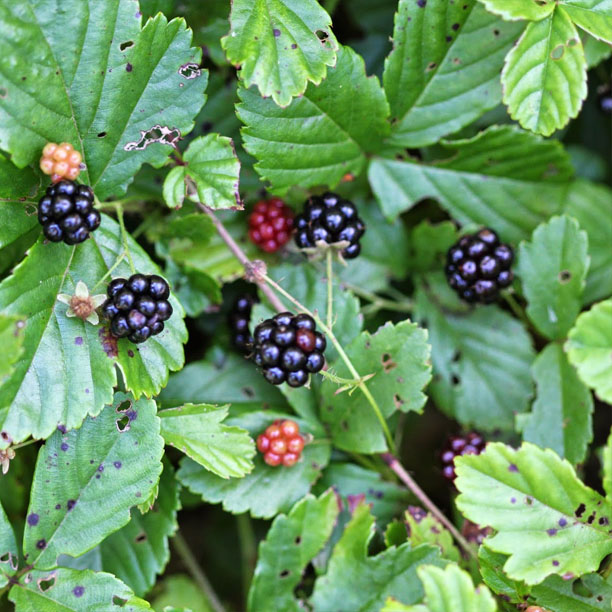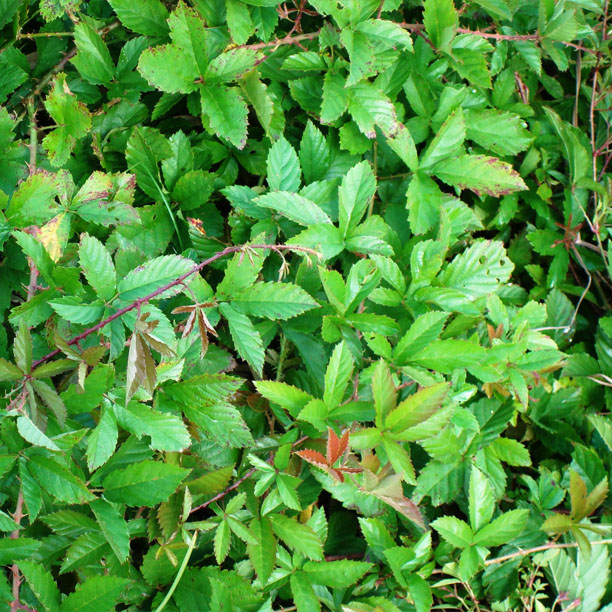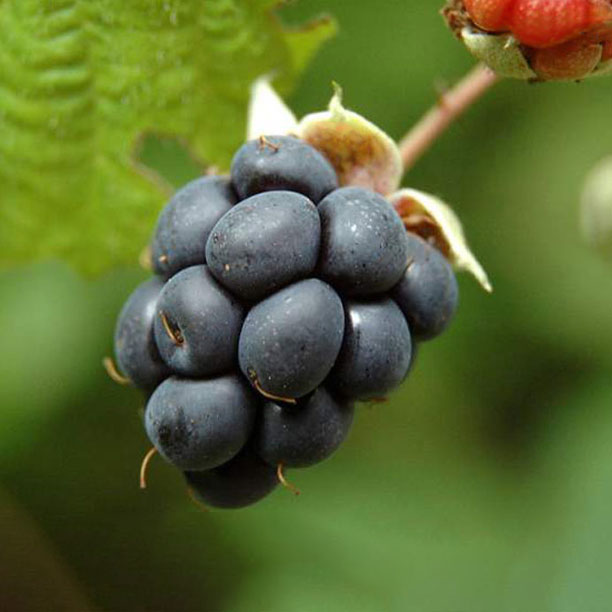Dewberry
How To Identify
Dewberry leaves are serrated compound leaves with 3 oval leaflets that are green on top and light green underneath. The vine is thin and string-like with very small but sharp thorns that grow about a finger apart. These vines trail along the ground and do not grow upward like the canes of raspberries or blackberries. Dewberries each grow at the end of their own stems, similar to blackberries, when picked the stem breaks at the base of the berry. They have small yellow five pedal blossoms just before and during their fruiting period in the summer and the leaves change color and drop off in the fall.



Benefits
The berries have calcium, potassium as well as vitamins C and E, selenium, beta carotene, lutein, lycopene, and zeaxanthin which are all examples of antioxidants. They also contain flavonoids, which have antioxidant effects. They also have anti-inflammatory and antioxidative effects that may reduce your risk of chronic diseases, such as heart disease, diabetes, obesity and cancer.
The leaves contain vitamin A, vitamin C, vitamin E, and B vitamins. These vitamins help support health by preventing oxidative stress and improving cellular processes such as improving energy levels, increasing metabolism, helping with inflammation of the skin, improving respiratory disorders, and boosting the immune system. The leaves also contain calcium, magnesium, and potassium. It’s been used traditionally in herbal medicinal for relieving spasms associated with menstrual periods, inflammation in the mouth or throat, and for gastrointestinal inflammation as well as diarrhea.
How To Find
Dewberries thrive on disturbed lands with adequate access to light and good drainage. Look down while you’re hiking and look for the telltale tangle of brambles that the berries grow on. The berries will start to appear in April and tend to finish by the end of May – beginning of June.
Gathering
Dewberries fruit in the spring, giving them a light tug will allow you to easily pick the berries but if they don’t come off easily, they may need more time to ripen. The leaves can be collected at any time of the year but in my opinion are best gathered in late spring when they are fresh and new before the plants start fruiting.
How To Use
The berries are delicious fresh, but they also make excellent preserves, pies, juice and syrup.
The leaves can be used fresh or dried to make a medicinal tea. Our preferred method is to dry the leaves for use with tea. To prepare a cup, steep about 2 Tbsp. of dried leaves by pouring boiling water over them and allowing to infuse for 15 – 20 minutes, then strain and serve or simply stuff a tea ball and steep in your favorite cup or mug.
For burns, bug bites and slivers, a spit poultice can be made by chewing a few leaves and applying the chewed-up leaves onto the affected area.
With similar but more concentrated benefits than tea, a tincture can be made by stuffing a jar (or other container) with fresh leaves and then toping it off with vodka. Some people prefer to use a high proof brandy because they enjoy the flavor. Allow this to sit on a window sill or another sunny spot for at least two weeks and then filter the liquid and discard the leaves. This liquid tincture can then be taken, 1/4–3/4 teaspoon (1–4 ml) two times per day.
Preservation
The berries can be water bath canned as they are or as pie filling, jelly or jam. They can be frozen whole or as a puree. They are best frozen immediately after being picked. Do not wash them first. If you do, they will burst open and turn mushy when frozen. The easiest way to freeze the berries is to spread them out on a cookie sheet and freeze them before bagging them up in freezer bags. Do not thaw the berries before using them in cooking or baking. Freezing them in a single layer keeps the berries from clumping together in the freezer bag. They can also be dehydrated or freeze dried and then powdered. To dehydrate them, place them in a dehydrator at 135°F for 8 to 18 hours. Time will vary with each dehydrator, size of berries and with temperature and humidity levels in your house.
To preserve the leaves, place them into a paper bag, or on a screen (window screen or similar) and allow them to dry in a dry dark place with good airflow. They can also be dehydrated using very low or no heat in a standard dehydrator or freeze dried. Oven drying isn’t recommended as the heat can damage the medicinal benefits. Another method of preserving the leaves is to make a tincture as described above. Because of the alcohol, tinctures can last on the shelf for years.